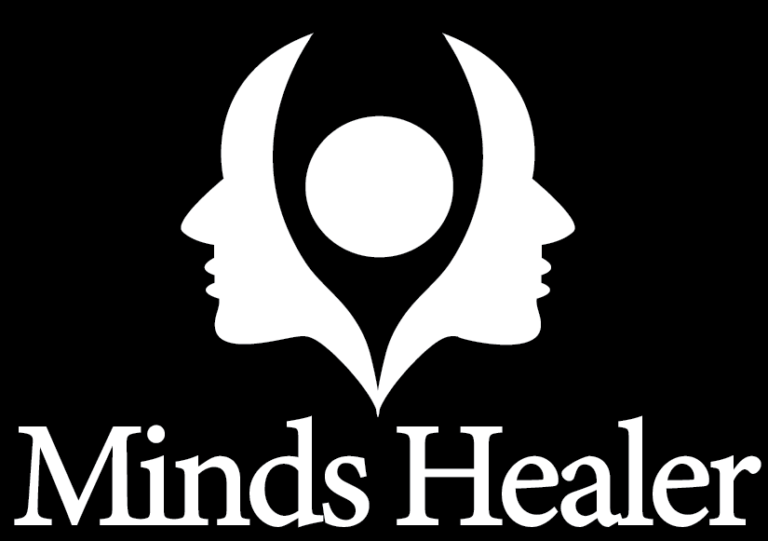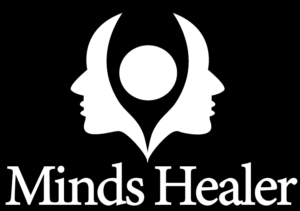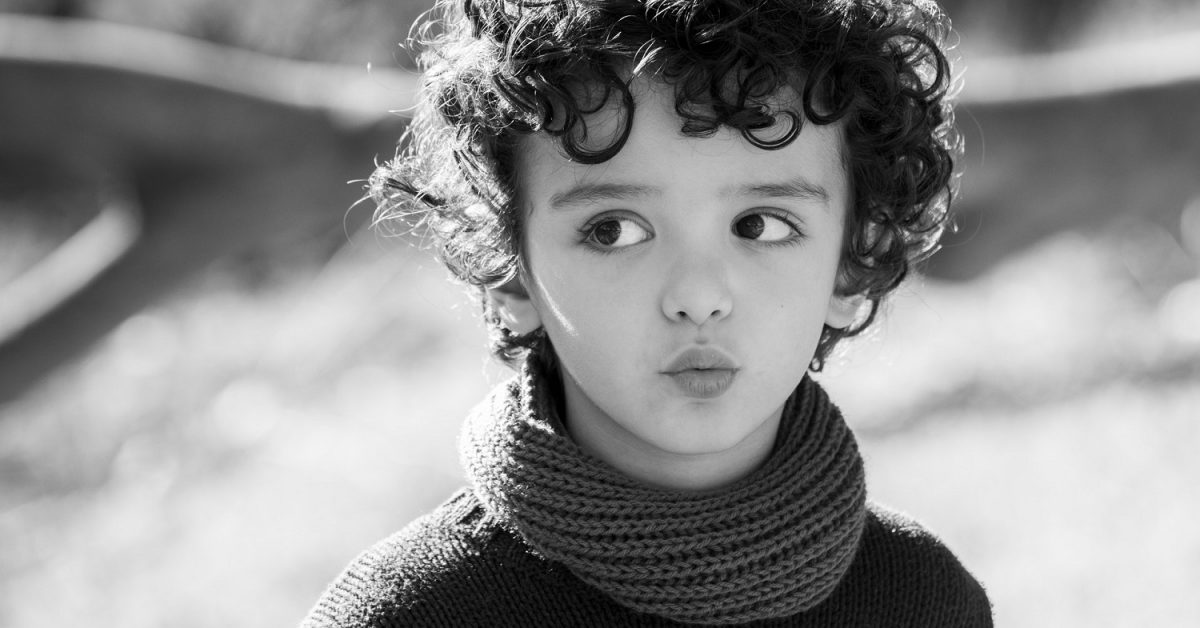“If you have met one individual with Autism, you have met one individual with Autism.”
– Stephen Shore
Confusing much?

It is a common misconception regarding Autism Spectrum Disorder (ASD) that all the people suffering from this disorder would have the same skills and difficulties. The quote tries to debunk this long-held myth by emphasizing the great diversity within the autism spectrum. The individuals may share certain commonalities, that we will understand through this blog, but it is absolutely crucial to comprehend that the constellation of these shared characteristics blend together differently for each individual.
Once considered rare, the present-day understanding of autism is that it is in fact one of the more common developmental disabilities. How common, you might wonder?
- The CDC (The Centers for Disease Control and Prevention), in 2020, reported that approximately 1 in 54 children in the U.S. is diagnosed with an ASD.
- Individuals from any ethnic and socioeconomic groups can be affected by autism.
- In India, recent estimation of prevalence of ASD ranges from 0.15% to 1.01%.
- In the INCLEN study, the prevalence of ASD was 1 in 125 in children 3-6 years and 1 in 85 in children 6-9 years of age (Juneja & Sairam, 2018).
In the last decade, there is a surge in the number of movies and other popular media portraying protagonists with disorders from the Autism Spectrum. Remember the beautifully developed character of Jhilmil from the movie ‘Barfi!’ (2012) played by Priyanka Chopra?
Jhilmil had limited speech and severe deficits in communication. She was a very shy and sensitive person who avoided making eye contact with anyone or being in close proximity of others. She communicated with others using odd gestures. These aspects showcased the social impairment she was enduring. She also carried out repetitive motor behaviours and also repeated some words over and over again. There were scenes in the movie where she threw tantrums when the routine would change. Jhilmil seemed to be in a world of her own.
This depiction of Jhilmil distinctly brings out what Autism Spectrum Disorder incorporates.
WHAT IS AUTISM SPECTRUM DISORDER?
To lay it down more formally, Autism Spectrum is a part of broader category of brain development-related disorders. This disorder is characterized by a range of serious and persistent disturbances in the ways that individuals interact and communicate with others, as well as in behaviours that can include performance of restricted, repetitive behaviour. It is a lifelong disorder but depending on its severity, the individual can receive help to function satisfactorily with the treatment. Autism is known as a “spectrum” disorder because there is wide variation in the type and severity of symptoms people experience.

An unusual variant of this disorder is called Autistic Savant Syndrome. These individuals possess an extraordinary skill like ability to perform extremely complicated mathematics or musical skills or ability to solve very complex puzzles, etc. Another variant is Asperger’s disorder (or High-functioning ASD) where the symptoms are of a less extreme nature.

SIGNS AND SYMPTOMS
To diagnose, children are evaluated on two core domains:
- Social communication and interaction disturbances across multiple contexts
- Restricted range of interests and performance of repetitive behaviour and activities
Within each of these domains, DSM-5 specifies three levels of severity:
- Requiring support
- Requiring substantial support
- Requiring very substantial support
Not all the individuals with ASD show all the behaviours, but most of them will show several. The core domain of impairment in social communication includes the following symptoms:
- Deficit in social-emotional reciprocity i.e. difficulty in keeping the conversation going because of abnormal social approach
- Reduced sharing of interests, emotions or feelings
- Failure in initiating or responding to social interaction
- Poor non-verbal communication
- Avoidance of eye-contact
- Tending not to look at or listen to people
- Odd body language
- Deficits in understanding and use of gestures
- Lack of facial expressions
- Difficulty adjusting and adapting to various social contexts
- Difficulties in sharing or engaging in the usual give-and-take of social interactions
- Facing a challenge with imaginative play and imitative play that involves role-playing, etc. (for e.g. – Doctor, Doctor!)
- Difficulties in making friends.

The other core domain of restricted and repetitive patterns of behaviour, interests, or activities, is manifested in the form of:
- Stereotyped or repetitive motor movements like tapping their hands or fingers or even twisting their bodies
- Repetitive speech i.e. echolalia which is repeating the same sounds or syllable again and again.
- Repeating the same routine without any changes
- Extreme distress at small changes or difficulties with transitions
- Rigid thinking patterns
- Extremely narrow and specifically focused interests, for example, strong attachment to or obsession with unusual objects
- Hyper or hyporeactivity to sensory input in their environment like indifference to pain or temperature, adverse response to particular sounds or textures, excessive smelling and touching things, visual fascination with lights or movement.
After understanding these symptoms, it is difficult not to notice how the portrayal of Jhilmil in ‘Barfi!’ was so close and precise.
These symptoms can typically be recognized during the second year of life but depends on severity. Language delays or lack of interest in social interactions are some of the very first symptoms. Other symptoms become more prominent as the infant grows into a toddler or starts going to school. This disorder continues throughout the individual’s life. Let us take a case study to see the manifestation of these symptoms –
ASD Symptom Manifestation
Dhruv, a 6-year-old child, was the only kid born to his middle-class parents. As an infant, he was relatively placid and undemanding and did not respond well to his parent’s efforts to play with and hold him. His mother had noticed how his whole body would stiffen when she tried to pick him up. When she tried to play with him, he would not make an eye-contact and just look out of the window. At 18 months of age, his parents realized that his behaviour reflected more than just a quite-temperament; that he might be developing abnormally. He was still babbling incoherently but other toddlers of his age had started putting together small sentences, marking serious language disturbances in Dhruv. Even his babbling did not sound like a normal infant; he would repeat the same syllable over and over again in a monotonous voice which seemed like he was communicating to the world of his own. He would often throw tantrums when there would be any changes to his routine. When evaluated by a child psychiatrist, Dhruv was diagnosed with autism spectrum disorder.
CAUSES OF AUTISM SPECTRUM DISORDER
Researchers have devoted substantial efforts to investigate the underlying factors causing ASD. However, there is no single cause that has been identified. Instead, they have pinpointed a number of characteristics that may make a person be at greater risk for developing the condition. These factors include genetic factors, neurobiological factors, and environmental factors.
Genetic factors – There is a strong base of evidence pointing to the patterns of familial heritance supporting the theory that autism is biologically cased.
- Researchers have estimated the heritability of the disorder ranging from 37% to higher than 90%.
- If an infant has an older biological sibling with ASD, they are almost 20% more likely to develop ASD themselves.
- Genetic abnormalities have been suspected to exist of some chromosomes.
- But, even when autism spectrum disorder is associated with known genetic mutation, in most cases, its expression is dependent on multiple genes. Perhaps, hundreds of them making small contributions.

Neurobiological factors – Abnormalities in genes may result in abnormal brain development and structural and functional brain abnormalities.
- People with this disorder appear to have deficits in the association area of the cortex.
- There is also some evidence suggesting that overall brain size is increased in some individuals.
- There is a difference found in anatomy and functions of cerebellum and in the limbic system.
- Abnormalities also exist in the neural circuitry of people with autism.
Environmental factors – Incidence of complications during the prenatal period i.e. during the pregnancy and before the birth seems to occur in infants who are later diagnosed with ASD. These complications might include:
- Dietary factors
- Exposure to drugs and to environmental toxicants
- Internal bleeding
- Birth trauma
- Fetal distress
- Low birth weight, etc.
However, there is not sufficient data to support the claim that any single prenatal factor could cause ASD. There is an interaction of all of these factors in mysterious ways leading to this complex disorder.

It is important to point that there is no scientific evidence of a potential link between vaccines causing autism spectrum disorder. It is high-time that we discredit this myth.
TREATMENT FOR AUTISM SPECTRUM DISORDER
The main objective of treatment for autism spectrum disorder is to target the core behaviours:
- To enhance social interactions, communication
- To help them integrate into schools
- To help them develop meaningful peer relationships, and
- Improve their skills necessary for independent living
- Increase their socially acceptable and prosocial behaviour with peers
- To decrease their odd and disruptive behavioural symptoms
Along with this, psychoeducation, support and counseling could benefit the parents of children with autism to understand their offspring better and optimize their relationship. To accomplish these treatment goals, a comprehensive approach of various psychosocial therapy including intensive behavioural programs, parent training and participation, academic interventions would be paramount and most effective.

Early Intensive Behavioral and Developmental Interventions:
- UCLA/Lovaas-based Model – The clinicians who adopt behavioural perspective, base their methods on the early intervention programs devised by UCLA psychologists called Ivar Lovaas, to treat children suffering from ASD. It is an intensive and manualized intervention administered on a one-to-one basis for several hours per week. The treatment is focused on working on:
- Specific social skills
- Language usage
- Reducing disruptive and aggressive behaviours
- Playing with toys and sharing
- Effective expression of emotions
- Academic tasks to prepare them for school
- Observational learning where they learn by watching other children learn, etc.
In this intervention, rewards are provided for accomplishments and mastery of skills and it has shown promising results.

- Early Start Denver Model (ESDM) – This intervention is administered in natural settings like child’s home or daycare centre which are part of the child’s daily routine. Parents are encouraged to be co-therapists and give training to the child at home. Educational settings of the child also provide the intervention. The main treatment goal is social interaction in these natural settings which include improving the play and relationship skills of the child. The intervention believes in training the child since a very young age.
- Parent Training Approaches – Parents in this intervention are taught to facilitate social communication development at home and during other activities by targeting the most crucial social behaviours first. Extensive family components are a part of this intervention. This training is administered for parents once in a week or so; however, once the parents are trained, the intervention occur throughout the day with the child.
Social Skills Approaches:
- Social skills training – This training is provided, in a group setting, to the children of various ages. It incorporates learning to:
- Initiate social conversation and greetings
- Initiate games
- Emotional regulation
- Label various emotions in a social situation
- Attribute appropriate emotional reactions in others, and
- Adopt various social problem-solving techniques.
The goal here is that the child will learn to use these behaviours in a less structured setting and have a hand-on experience on how to interact positively with peers.

Behavioural Approach: These interventions aim to reduce disruptive behaviours and teach alternative behaviours. Clinicians using this approach try to examine the cause of a certain problematic behaviour, along with the consequences of that behaviour, and then try to make adjustments in this chain. The goal here is to increase desired behaviours and/or decrease inappropriate ones. Some specific therapies under this approach include –
- Applied Behaviour Analysis (ABA) – Applied behavioral analysis has been effective in decreasing some repetitive behaviour in children and adolescents with ASD. It focuses on bringing about positive change in the child’s behaviour. This intervention can be introduced in both structured and natural settings and also in individual or group instruction. The intervention is customized to meet the needs, interests and symptoms of the client and his/her family. It helps in building variety of skills like communication, social skills, self-monitoring, etc.
- Discrete Trial Training (DTT) – This training uses individual training approach where skills are taught in small, increasing steps in a systematic and controlled manner. It involves first instruction from the therapist or the teacher, then response of the child and later, a consequence or feedback about the response. For example – the therapist might teach the child to break down a large problem, such as getting dressed, into smaller tasks that the child can accomplish. As a result, the child feels less frustrated.
- Incidental Teaching – It a teaching technique that uses behavioural approach where the clinician provides some naturally present teaching opportunities that are based on the child’s interest.
- Pivotal Response Treatment (PRT) – It is a play-based method where the aim is to:
- Teach the child speech sounds, words and language
- Decrease disruptive behaviours
- Increase social communication and academic skills
This technique targets the core domains of development and believes that if the focus is on changing the main symptoms and behaviours, then it would bring out changes and improvement in other behaviours too. The child is rewarded when he/she indulges in adaptive behaviours.
- Positive Behaviour Support (PBS) – This approach uses a positive and a non-punitive techniques for improving the child’s disruptive behaviours. It first assesses challenging behaviours and then replaces them with functionally equivalent replacement behaviours. It combines behavioural approach with person-centred values to foster different adaptive skills.
There are also interventions like Functional Communication Training (FCT) and Self-management that have been found to be efficacious in tending to Autism Spectrum Disorder.

Cognitive Behavioural Therapy (CBT): CBT is an approach that blends cognitive and behavioral learning principles to encourage desired behaviours. In ASD, it helps the individual improve their behaviours by learning to regulate emotions and control their impulses. However, these techniques are more beneficial for the individuals who have verbal skills and are mildly affected by the core ASD symptoms.
Educational interventions:
- Treatment and Education of Autistic and Communication related Handicapped children (TEACCH) – It incorporates structured teaching which is based on the idea that children with ASD have difficulty in perception. It involves many visual supports and a picture schedule to help in teaching academic subjects and also socially appropriate responses. For example, they can be taught to touch an icon or a picture of a ‘frowny’ or ‘sad’ face to indicate their displeasure rather than acting out aggressively when they are upset. The day is structured to promote autonomy and social relatedness.
- Broad-based approaches – This method focuses on language remediation by combining teaching strategies with behavioral analysis. Rewards are given when appropriate and socially acceptable behaviours are performed by the child.
- Computer-based approaches and virtual reality – These approaches include teaching language or reading skills via computer-based programs, games and interactive programs. The child may find it appealing and have a sense of mastery. For example – The ‘Let’s Face It!’ program is a computerized game specially developed to help children with ASD to recognize faces. It consists of seven interactive games that teach the child to change facial expression, identify emotional expression, to recognize a face, divert attention to eye region of the face etc.

Peer-mediated or Peer-implemented Treatment: Another approach to intervention is to have peers rather than adults interact with the child. It minimized isolation, provides effective role models and boosts communication competence. It allows children to carry on with their ordinary activities without adult interruption. Peers are taught strategies to facilitate play and interaction.
Biological Treatment: Medications are not used to ‘cure’ the disorder, but they might be used to address severe symptoms and behaviours like –
- Irritability
- Aggression
- Self-injury
- Anxiety
- Repetitive behaviours
- Hyperactivity
- Attention issues, etc.

There are several other treatments and interventions that are used with children having autism spectrum disorder including contemporary interventions like animal-assisted therapy or occupational therapy or various techniques of speech therapy or relationship-based interventions, etc. Mostly, the clinician utilizes an eclectic or multidimensional approach for overall development of the child.
A HANDY GUIDE FOR PARENTS AND CAREGIVERS
Though autism is a lifelong disorder, there are many things one can do to help a child with autism spectrum disorder to overcome the challenges they face in their daily life. These are some useful and practical tips and tricks you could employ while tending a child with ASD –
- Educate oneself – First and foremost, learn more about autism, its symptoms and treatment options (this blog will definitely help!). The more you know about the disorder, the more you will be able to help that child.
- Observe the child – It is important to know when your child feels stressed, or uncomfortable, or frustrated or even happy. When you know what triggers his/her tantrums or disruptive behaviour, you could prevent it from happening or modify it or do something that he/she likes.
- Unconditional love – The children on the autism spectrum have different and unique abilities and their own way of life. Comparing them with other children of their cohort or trying to make them ‘normal’ or ‘cure’ them, would only do more harm. It is absolutely crucial to understand them as they are and be patient around them. Love and accept them unconditionally with all their quirks. This will help the child more than anything else.

- Provide a structure – It is a known fact that children with autism function best in a highly structured and fixed routine. Setting up a comprehensive schedule of their quotidian like time to wake up, shower, have meals, play time, therapy, school etc. would help them to a great extent. Try to stick to this schedule and if you cannot, inform them in advance instead of letting them find out on their own. This may cause distress.
- Positive reinforcement – The longest journey starts with a single step and their small achievements and baby steps should be appreciated and celebrated. Rewards and appreciation when they have behaved in a desirable manner or learnt something new or taken a step ahead would go a long way. Praise them specifically for the good thing he/she has done and find something like a sticker or a coupon to give them every time that behaviour is performed. This is also called ‘token economy’ where after they have collected 5 coupons/stickers you will reward them with something they like very much. It can be a food item or any cartoon or extra time to play with their favourite toy, etc.
- Give them space – This would be in the literal sense of carving out some space at home for them where they could feel relaxed or secured and safe. They could come to that place whenever they are distressed. This would also help them learn about setting boundaries and giving time out.
- Safety-proof the house – This would be in case of children who are more likely to throw tantrums or involve in self-injurious behaviours.
- Try to connect – Observe and learn what their non-verbal behaviours like facial expression or a particular action mean. Also, it can help if you set a time for playing with them. They are still children and there is much more to their life than therapy. Doing something they like with them would make your caregiver-child bond stronger.



